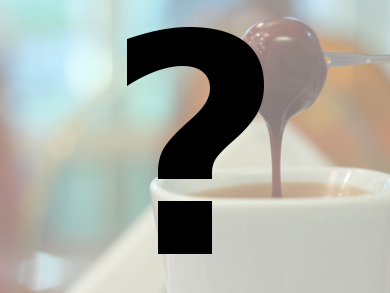Congratulations! Your answer is correct.
Molten chocolate shows non-Newtonian flow characteristics. “When a piece of chocolate melts on the tongue, it at first maintains its shape and does not disperse. When the tongue presses this highly viscous liquid against the upper palate, the chocolate becomes watery due to the mechanical stress. It flows over the surfaces of the tongue and the palate, and its bitter-sweet taste composition finally takes hold of the fifth sense, the sense of taste.”
“Due to its nonpolar character, it clings to the entire surface of the tongue and the palate in a thin layer which, even after several times of swallowing of watery saliva, does not detach. At temperatures of >35 °C, volatile fragrant compounds rise from this thin layer. They fill the mouth, then ascend into the nasal cavities and there bind to the receptors of the olfactory neurons which, after signal processing in the brain, create this pleasant odor experience.”
- Chocolate — The Noblest Polymorphism II,
Klaus Roth,
ChemViews Mag. 2010.
DOI: 10.1002/chemv.201000030


